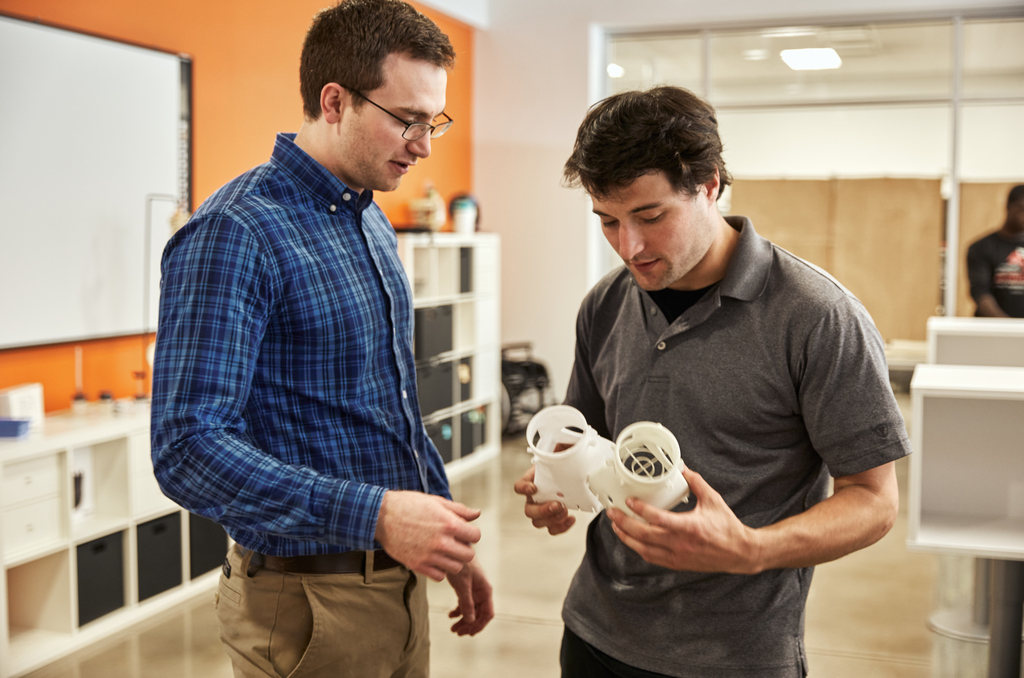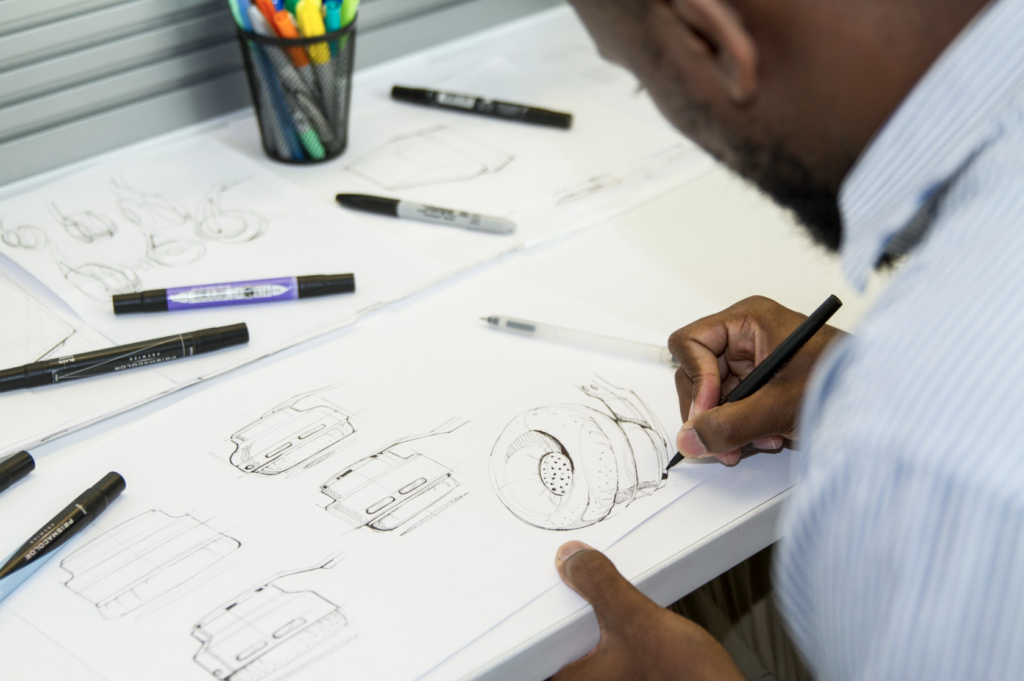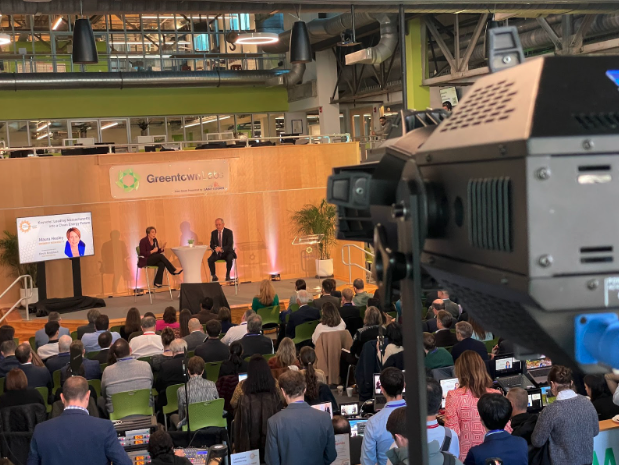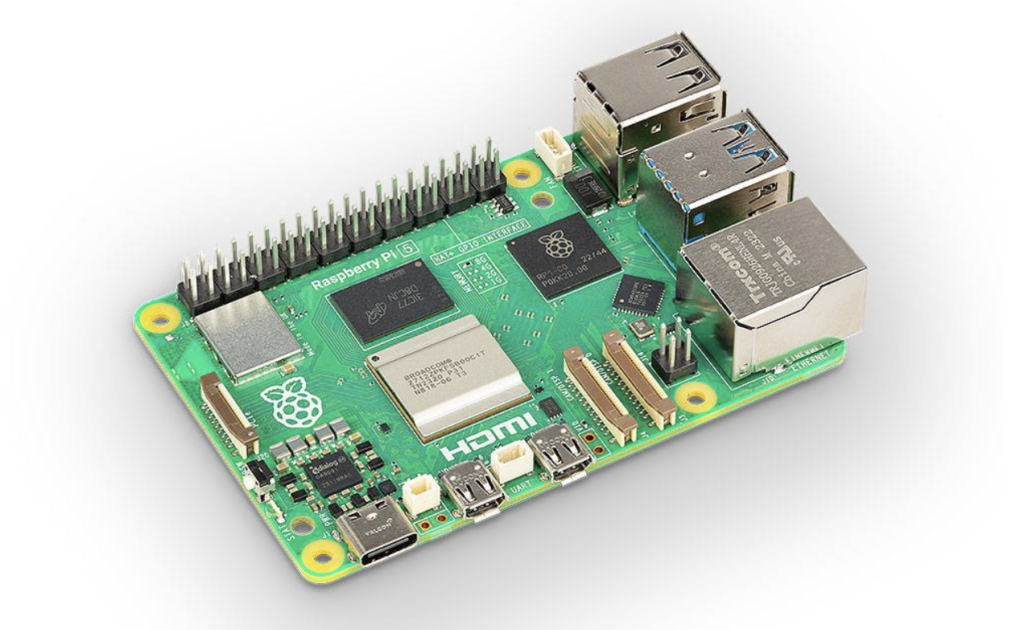
Working with a product development firm can help ensure your idea is engineered, tested and ready for manufacture. Development firms can help you make more sophisticated prototypes and navigate the process of bringing your idea to life.
Product development firms can help inventors navigate the potential confusion and add value to the product.
It can be stressful for an inventor to share his or her product and let other people help work on it. However, with some preparation, the transition to working with an agency can be smooth and valuable. Here are five things to do before engaging with a development firm to maximize the benefit of working with those pros.

Do your research
While you, the inventor, have been immersed (and potentially obsessed) in your product and its marketplace, the development team is coming in cold.
Even if the engineers and designers have familiarity with the problem you are solving or the industry, they will need to do some research to be as familiar with it as you. Anything you can do to get them up to speed quickly will help them and you.
The best way to convey this knowledge is to document your research activities. Present the development team with those documents. Explore the marketplace, understand what features your direct and indirect competitors have, and outline how your product is different.
Don’t spend your money and their time doing elemental research that uncovers a fatal flaw or glaring issue in your strategy. Let the development team review well-thought-out research and use their fresh eyes to find clever ways to make the product better.

Before coming to Enventys Partners with his idea for a new type of hunting tree stand, Heaven’s Trail founder Chris Berry (center) spent hours in the woods using other brands of tree stands and took copious notes on how he wanted to make his better.
Build a prototype
There is so much to learn from building a prototype. You should build at least one before working with a development team.
Even if you have the skill to design your own parts and have them made with 3D printers or other means, your initial prototypes need not be fancy. Simple prototypes, especially in the early stages, can be just as effective. Cutting shapes out of cardboard, or light modifications to existing commercially available products, can provide key insights for you and help inform the team.
Some clients come in with prototypes made from LEGOs that were used to explore the size of their product and where it would live in the home. Prototypes of any kind are immensely helpful to a design team. They show that key aspects of the product have been thought through.

Jim Fulbrook built this prototype of his plantar fasciitis treatment device before working with Enventys Partners to prove that his concept was viable.
Create a design brief
A design brief is a document that defines all aspects of the product. It lays out the physical properties of the product including maximum and minimum dimensions, weight, and materials it must or must not use.
The brief provides electrical characteristics such as the power source (battery- or wall-powered), battery life, speed of motors, type and placement of indicators like LEDs, and any other relevant information. It may also include function flow diagrams of how the product will be used or any logic the microcontroller needs to cover. Pricing information including the desired sales price of the product is also listed.
It takes time to bring this data together, but it will help you clarify what you really want. It will also help the new development team to see where you need help the most.
Getting it down on paper will help your team see if there are potential conflicts in the requirements, or where tradeoffs may be found. Functionally, the firm you work with may be able to provide you with a document template that it likes to use, or you can make your own or download one from the web.
It is OK to leave some areas blank. Provide ranges if you are unsure about a spec. It’s also smart to isolate areas that you simply do not care or need help defining.
In any form, this document will be immensely useful to help convey your vision in a definitive way and decrease the chances of misinterpretation or what you want. This means a more focused development effort that will cost less and take less time.

A development client of Enventys Partners, Infernoguard, just won a major award from a pitch competition to help it continue its development journey.
Secure funding
Development firms cost money, so it will be necessary to have funding to fuel their efforts. Many firms work on a time-and-materials basis (sometimes abbreviated T&M). They should be able to provide an estimate for the services you want.
Prices depend on how comprehensive a scope you need and how far you want the firm to take it. This may range from less than $1,000 for simple prototypes to $250,000 or more for a napkin sketch to production program of a connected product.
In either case, your chosen firm will help you map out cash flow burn, explain how many hours per week the team will work on your product, and provide rates for different specialties such as industrial design and engineering.
Well-capitalized inventors may not need outside funding for development; others may tap into friends and family networks for the early stages of the project. You may contact your chamber of commerce or SBIR (Small Business Innovation Research) office to see if there are funding opportunities, grants, or pitch competitions.
It also helps to contact angel investor groups or venture capital organizations, to determine whether your product is something in which they have an interest. Note that different funding sources will have different terms or requirements to fulfill, and you will need to understand and be good with them before taking any outside funds.
In any case, make sure you have more funds than are estimated to cover any issues that come up or changes that will affect the overall budget.
Optional: Get a patent
It is not requisite to come to a development firm with a patent in place, but it can help focus your team.
If you have done enough research and prototyping and have a good sense of the core technology, you can protect it. A provisional patent application or full utility patent can help lock in protection for your product before you hand over development to a firm.
In this case, you will not be asking the team to come up with blue-sky or new ideas—just to focus on making your patented technology market-ready. Be sure to convey to your team members how reverent you want them to be to your existing patents and claims, and if you want them to find new opportunities for additional IP.
Work With Us
Want to learn more about how we’d prepare your product for launch? Request a quote today.
Want To See This Advice In Action?
Check out our case studies and learn more about how we’ve achieved stellar results for our clients.



